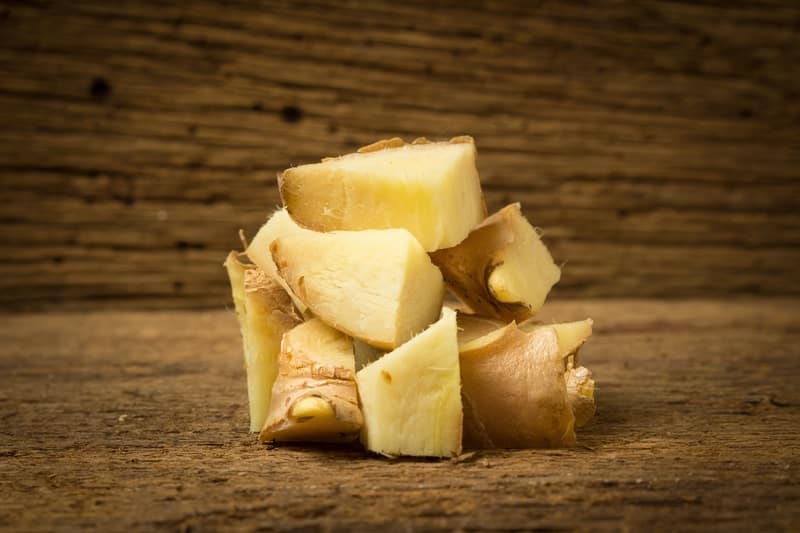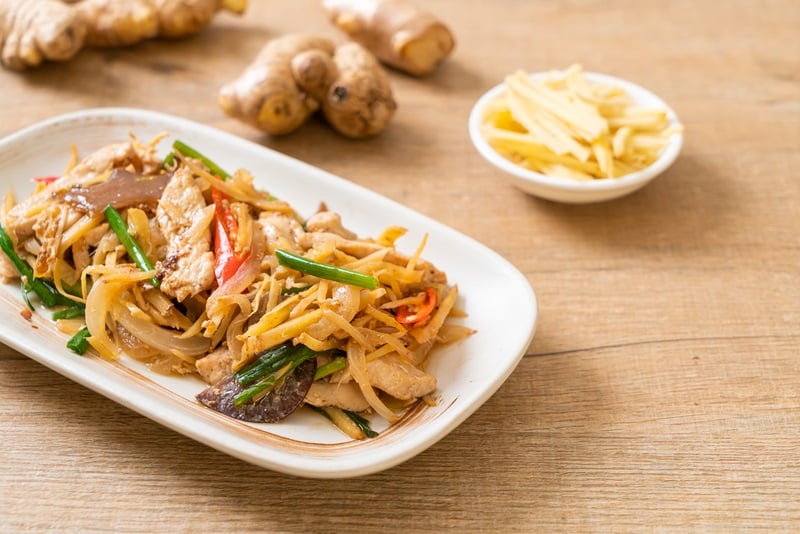
Ginger is a warm spice that’s used in many types of cooking as well as for folk remedies. The herb grows about 1 meter tall with long, narrow leaves that look like blades.
The root of these herbs is the edible part that you use in cooking. The skin of these roots is a light golden brown.
Ginger is normally used fresh after it has been peeled. The piece of root is then usually grated to leave the fibrous hairs behind and release the pungent juice and pulp. It can also be used finely chopped or sliced, depending on the recipe.
However, ginger is available in many forms – fresh roots, dried ground powdered root, candied in syrup (usually in a jar), or crystallized. These forms are fairly interchangeable but you need to get the quantities right. Also, remember that the candied and crystallized forms are sweet.
Many recipes call for “an inch of ginger root” and some cooks are confused by this. This is usually speaking of fresh ginger root.
Of course, the amount of ginger added will depend on the recipe, but note that ginger has a strong flavor which is why it is normally used in small quantities. Putting too much ginger into a dish can overpower all the other ingredients, making your entire dish taste like nothing but ginger.
This is exactly why most recipes that require this herb ask people to put about 1 inch of ginger in their food. This is enough to provide you with a unique taste while still maintaining the flavor of all your other ingredients.
But what if you’re substituting fresh ginger for another form?
How Much Is 1 Inch Of Ginger?
1 square inch of finely grated fresh ginger yields one teaspoonful of ginger pulp. This is approximately ½ a teaspoon of dried ground ginger powder. Substitute one tablespoon of finely chopped crystallized ginger.
However, this isn’t exact but don’t worry, you are unlikely to destroy a dish by simply using an extra teaspoon or so of fresh ginger. An inch is approximately the length of your last thumb joint from knuckle to tip.
It’s a good idea to record on your recipe how much ginger you used so that you can adjust the quantity next time.
Using Your “1 Inch of Ginger”
Of course, while you can substitute fresh, preserved, and dried ginger for one another, as with most things the fresh version is the best. It has a more pronounced, citrusy, slightly acidic flavor.
Remember that it’s not just for traditional sweet treats like gingerbeer and gingerbread, but it works wonderfully in savory Asian dishes like curries and stir-fries.
When you’re cooking with this warm spice, remember that heating it mellows its flavor, so to get the full benefit, add some at the beginning of cooking and some at the end.
Also, because the strength of ginger root varies widely depending on the variety, freshness, size, and many other factors, always taste the dish to see if it needs more than the obligatory inch.
Recipe books and cooking shows always tell us to peel ginger before grating it. This is only necessary if you have an old, gnarly, discolored root (which you shouldn’t be using anyway!)
If your piece of root is fresh, young, and smooth, go ahead and grate the skin as well – it’s edible. Grating is made easier if you freeze your ginger first. This is also a great way of preserving it and preventing it from shooting.
We hope this gives you a better idea of how much an inch of ginger is and how to use this precious spice.

